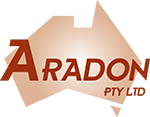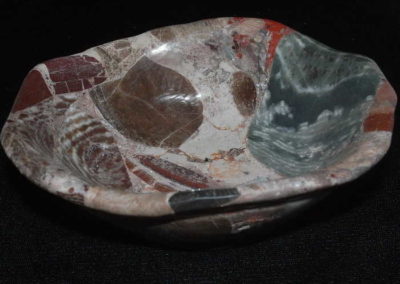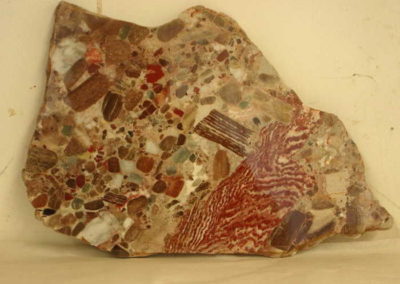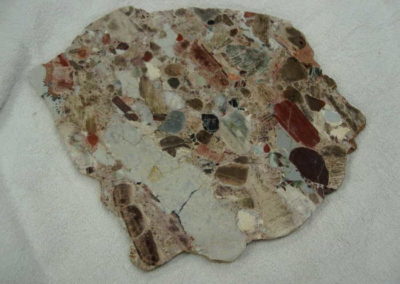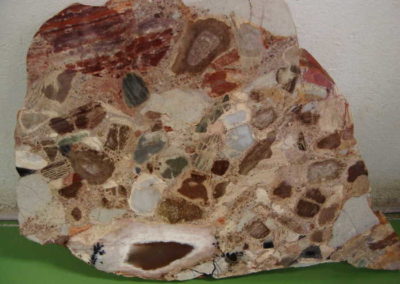This example of conglomerate is found on Marillana Station, a large cattle grazing property about 90 km north of Newman in the Pilbara region of Western Australia.
Conglomerates are sedimentary rocks. They are made up of large sediments called clasts. Clasts are typically sediments greater than 2mm diameter, such as sand and water worn pebbles. The clasts in this example mainly comprise banded iron formations, quartz, jaspers and chert. The smaller particles contain clays and a high percentage of silica sands which makes the stone hard. The finer size sand and clay is usually deposited on top of the larger clasts, filling the voids and spaces between them. Given the right conditions and ingredients, the finer particles combine to form a natural cement which binds the rock together.
It takes a strong current to transport particles this large, maybe a swiftly flowing stream or a beach with strong waves. This deposit is located in a wide, ancient valley that is rich in iron ore. It is likely the remnant of a river that has changed course many times over millions of years.
This conglomerate has a MOH’s hardness of 5.5 – 6.5. It is most often cut into specimen pieces and slabs, but makes attractive bowls, carvings and other ornamental objects.
